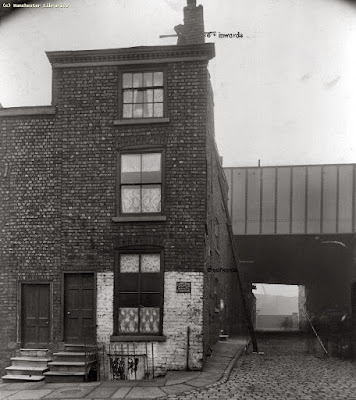Men flocked to the Colours, many wanting to do their bit before it was all over and Rupert Brook wrote
"Now, God be thanked Who has matched us with His hour,
And caught our youth, and wakened us from sleeping.*
And yet it can only have been one aspect of how collectively the country greeted the news.
After all Sir Edward Grey’s famous comment that "The lamps are going out all over Europe” was made by the man closely associated with the decisions which led to our ultimatum with Germany.**
And on that day the Manchester Guardian had been full of letters deploring Britain’s possible involvement while the editor C.P Scott had commented that
“If we rush into war ...it will be both a crime and ruinous madness in which we risk everything of which we are proud and gain nothing.”***
Such feelings were mirrored by resolutions passed by churches and church bodies calling for neutrality, and large meetings held across Greater Manchester including one at the Milton Hall on Deansgate the day after war was declared reaffirming a belief that we should have remained neutral.
Uppermost were the fears for those who would be called to fight, the loss of treasure involved in paying for the conflict and the unease at lining up with countries like Russia and Serbia.
And amongst sections of the Labour Movement there was the a real concern that “wars are of no concern to Labour.
The only purpose as far as we are concerned, would be to divert attention from social needs, and the only people who would benefit would be the armament firms.
We never know what financial forces are behind movements which precipitate nations in to wars of this kind.”****
A sentiment which was matched by resolutions from trade unions like that from the Electrical Trades Union,
“strongly protesting against the present war in Europe as a ‘wanton and wilful waste of human life which will be the cause of unparallelled misery and hardship to the workers of all countries.’”*****
That opposition never really went away and as the war deepened it maintained a constant, but the majority of the country swung behind Britain’s involvement.
By September the Labour candidate in the Bolton by-election was unopposed by the other two parties because he “was a whole hearted supporter of the war policy.”******
And a little over a month later the Labour MP for Manchester East, John Edward Sutton speaking to a meeting in his constituency commented that “when our ultimatum was sent [the Labour Party was] practically unanimous in deciding to support the war through.
Our policy as a party was to sink and fall with the Government, as the Opposition had done, and do their best to bring the war to a successful issue.” ******
Although it is interesting that he maintained that “German Socialists like the Socialists of this and other countries were against war... but were out numbered in the German Parliament by the militarist and aristocratic party” concluding that they now “had to do the best they could for their country just as we believed we must fight the war to the finish.”
His speech was met by frequent applause and that I guess brings us back to the image of the cheering crowds complimented by the recurring news of the numbers enlisting in Manchester Pals Battalions and the report that of the 280 Manchester undergraduate on the Officer Training Corps over 200 had taken commissions in the two months since the war began.
Next, the treatment of enemy aliens, unemployment, distress and the growing role of women in the war effort.
Pictures; selection of picture postcards from the collection of David Harrop
*Peace Rupert Brooke, 1914
** "The lamps are going out all over Europe, we shall not see them lit again in our life-time."
***To a group of Manchester businessmen and Liberals on August 3 1914
****Councillor W.T.Jackson, Secretary of the Manchester and Salford Labour Representation Committee, Labour Protest in Manchester, Manchester Guardian, August 3 1914
***** The Attitude of Labour, Manchester Evening News, August 3 1914
******Bolton By-election, Manchester Guardian, September 15 1914
******The Labour Party, Manchester Guardian, October 12 1914



















































